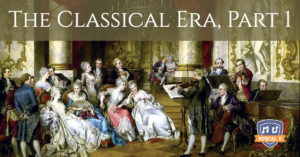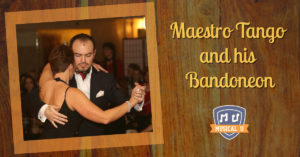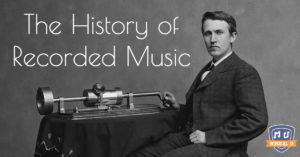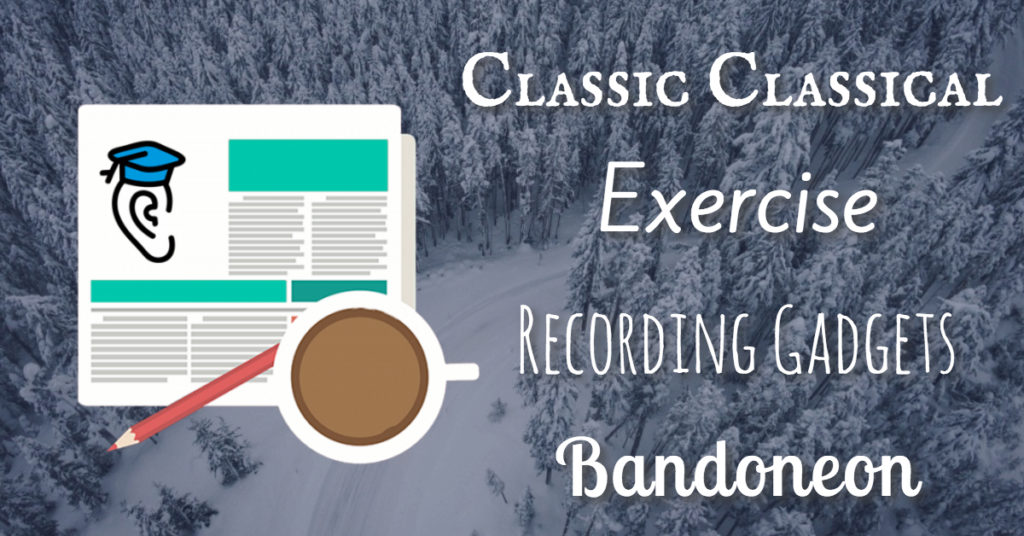A life in music is a life of perpetual growth and development. True musicians always hunger for ways to add depth and breadth to their skills and expression. Just when it seems like it can’t get any better, we discover new amazing music around us within ourselves.
Sometimes that growth comes from unexpected places, as we learn how exercise makes us better musicians. We’ll also see how the growth of music recording technology benefitted from that same restless, creative drive. And we’ll see how a classical conductor (and committed wallflower) found his passion in tango music and dance.
The history of music of all kinds mirrors our personal musical journey in its process of constant refinement. Nowhere is this so well documented than in the grand march of musical masterpieces known as Western Classical Music.
Classic Classical
 Scholars divide the 1000-year span of Western Classical Music into various style periods. The Classical Era, 1750-1820 – including composers such as Haydn, Mozart, and Beethoven – lends its name to the whole tradition. Learn how these masters created some of the most popular music ever (by embedding catchy, tuneful melodies within large, clearly constructed forms) in Exploring Classical Music: The Classical Era
Scholars divide the 1000-year span of Western Classical Music into various style periods. The Classical Era, 1750-1820 – including composers such as Haydn, Mozart, and Beethoven – lends its name to the whole tradition. Learn how these masters created some of the most popular music ever (by embedding catchy, tuneful melodies within large, clearly constructed forms) in Exploring Classical Music: The Classical Era
How do you keep track of the strange names of classical pieces?
Classical music titles don’t follow the same “rules” as we are used to with popular song. Classical Diary puts an end to this awkward moment.
Are you in need of a way to explain to your students the difference between the Classical and Baroque eras of music? This little film from Miss Emma’s Music Resources will help your students to understand the significant ideals of both.
What better place to to discover Classical music than Classic FM? Here, they share a thorough beginner’s guide to the Classical music era.
Run from the Practice Room
 Endless hours of practice – and nothing else – can actually hurt your musicianship. Exercise builds the breath, muscle, and coordination that helps us maintain the posture and stamina to sing or play instruments. But did you know that exercise will also sharpen your thinking and open up your creativity? Find out how with these 6 Ways Exercise Makes You a Better Musician.
Endless hours of practice – and nothing else – can actually hurt your musicianship. Exercise builds the breath, muscle, and coordination that helps us maintain the posture and stamina to sing or play instruments. But did you know that exercise will also sharpen your thinking and open up your creativity? Find out how with these 6 Ways Exercise Makes You a Better Musician.
As musicians, it can be easy to forget that our body matters as much as our mind. This amazing infographic from Take Lessons has ten fitness exercises for musicians.
A regular (or semi-regular) fitness routine can be very helpful for brass players – and all musicians! Here are some fitness suggestions from Brass Musician, applicable to all.
Let’s face it. It can be very hard to keep in shape as busy musicians. Whole Musician offers advice for staying on track with our fitness.
Get Your BandoneOn
 What would you do to land a great gig? Former wallflower Alejandro Pinzón had the chance to conduct a ballet orchestra – on one condition: he had to learn to dance. Having dabbled in tango violin, he learned to dance tango, found his passion, and took on one of the world’s most difficult instruments: the iconic bandoneon. Find out more about the bandoneon and the man who became Maestro Tango.
What would you do to land a great gig? Former wallflower Alejandro Pinzón had the chance to conduct a ballet orchestra – on one condition: he had to learn to dance. Having dabbled in tango violin, he learned to dance tango, found his passion, and took on one of the world’s most difficult instruments: the iconic bandoneon. Find out more about the bandoneon and the man who became Maestro Tango.
The bandoneon has an essential role in the tango orchestra, and in fact has become almost the symbol of tango. Very Tango Store has more about this unique instrument.
When did the bandoneon first become popular in tango music? Argentine Tango School chronicles the appearance of the bandoneon in tango.
Do you really want to be inspired? Have a look at this video from Piano Around the World, who produced a series of videos about the musicians and music of Argentina.
Gadgets and Gizmos
Phonographs, gramophones, graphophones, magnetophones – the history of recorded music chronicles an incessant drive for perfection and is festooned with visionaries, intrigue, patent wars, and interesting side-trips. Yes, we’ve come a long way from tin foil and wax! Learn more about this wild ride in The History of Recorded Music.
 The history of recording devices is indeed fascinating, especially if you’ve never heard of wire recorders. Audio Engineering Society has this history of recorded technology.
The history of recording devices is indeed fascinating, especially if you’ve never heard of wire recorders. Audio Engineering Society has this history of recorded technology.
What is a wire recorder? Have a look at this article from Recording History on the wire recorder, as well as other recorded technology through time.
One of the great joys of being a musician is being part of this endless legacy of creativity and expression. Whatever your musical passion, there’s always room to grow when you choose to expand your skills, practice, awareness, and care for your own body. Inspire yourself with these articles: ready, set, grow!







